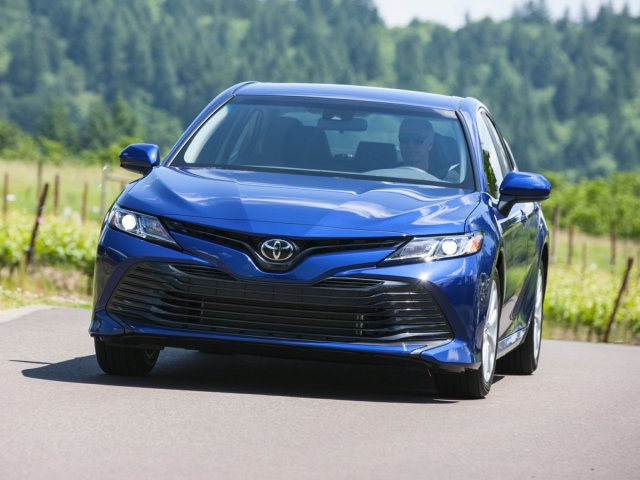The automobile industry is undergoing a profound transformation, with a growing emphasis on sustainability and environmental responsibility. As concerns about climate change and air pollution mount, consumers and automakers are increasingly turning to alternative vehicle options to reduce their carbon footprint. Two of the most prominent alternatives to traditional gas-powered vehicles are electric and hybrid vehicles. In this blog post, we will explore these options, their benefits, and their impact on the automotive landscape.
The Rise of Electric Vehicles (EVs)
Electric vehicles (EVs) have gained significant traction in recent years, thanks to advancements in battery technology and a growing infrastructure of charging stations. EVs are powered entirely by electricity, stored in large lithium-ion batteries, which drive an electric motor to propel the vehicle.
Benefits of Electric Vehicles
1. Zero Emissions: EVs produce zero tailpipe emissions, making them a cleaner and greener option for reducing air pollution and combatting climate change.
2. Lower Operating Costs: Charging an EV is typically cheaper than filling up a gas tank, and EVs have fewer moving parts, reducing maintenance costs.
3. Quiet and Smooth: Electric motors operate silently and provide a smooth, vibration-free driving experience.
4. Instant Torque: EVs offer instant torque, delivering rapid acceleration and a responsive driving feel.
5. Regenerative Braking: Many EVs feature regenerative braking, which captures energy during braking and converts it back into electricity, increasing efficiency.
6. Incentives: In many regions, governments offer incentives such as tax credits, rebates, and access to carpool lanes to encourage EV adoption.

Challenges of Electric Vehicles
1. Limited Range: Although the EV range is improving, it can still be limited compared to gas-powered vehicles, which can be a concern for long-distance travel.
2. Charging Infrastructure: Widespread availability of charging stations is essential for EV adoption, and while progress has been made, some areas still lack adequate charging infrastructure.
3. Charging Time: Charging an EV can take longer than refueling a gas vehicle, especially with standard home chargers.
4. Upfront Cost: EVs tend to have a higher upfront purchase price, although this cost difference is decreasing as technology advances and economies of scale are realized.
5. Battery Degradation: Over time, the capacity of an EV’s battery can degrade, reducing its overall range.
The Popularity of Hybrid Vehicles
Hybrid vehicles, often referred to as hybrids, combine both an internal combustion engine (typically gasoline) and an electric motor. These vehicles can operate using both power sources simultaneously or switch between them, depending on driving conditions.
Benefits of Hybrid Vehicles
1. Improved Fuel Efficiency: Hybrids use less gasoline than traditional vehicles, resulting in better fuel efficiency and reduced emissions.
2. Reduced Environmental Impact: Hybrids produce fewer emissions than conventional vehicles, making them a more environmentally friendly option.
3. Regenerative Braking: Like EVs, many hybrids feature regenerative braking, which improves efficiency and captures energy during braking.
4. Extended Range: The combination of an internal combustion engine and an electric motor provides hybrids with a longer driving range compared to pure EVs.
5. Lower Operating Costs: Reduced fuel consumption and lower maintenance costs contribute to lower operating expenses.
6. Incentives: Similar to EVs, some regions offer incentives for purchasing hybrid vehicles.
Challenges of Hybrid Vehicles
1. Limited Electric-Only Range: Hybrids generally have a limited electric-only range compared to plug-in hybrids and full EVs.
2. Complexity: Hybrids are more complex than traditional vehicles, which can lead to higher repair costs if specialized components fail.
3. Less Environmental Impact: While hybrids are more environmentally friendly than traditional vehicles, they still produce emissions from the internal combustion engine.
Types of Hybrids
There are several types of hybrid vehicles, each with its own characteristics:
1. Full Hybrid (HEV)
Full hybrids are capable of running on electric power alone for short distances at low speeds. They can also switch between the electric motor and the internal combustion engine as needed, providing improved fuel efficiency.
2. Plug-In Hybrid (PHEV)
Plug-in hybrids can be charged via an electric outlet, allowing for longer electric-only driving ranges compared to traditional hybrids. They offer the flexibility of both gasoline and electric power sources.
3. Mild Hybrid (MHEV)
Mild hybrids use a smaller electric motor that assists the internal combustion engine but cannot power the vehicle independently. They primarily improve fuel efficiency and reduce emissions during acceleration.
Factors to Consider When Choosing Between EVs and Hybrids
When deciding between electric vehicles and hybrids, several factors should be taken into account:
1. Driving Habits: Consider your typical daily driving distance and whether you have access to charging infrastructure. If you have a short commute and can charge at home, an EV may be a suitable choice. If you frequently drive long distances, a hybrid with a gasoline engine may be more practical.
2. Environmental Concerns: Evaluate your environmental priorities. If reducing your carbon footprint and minimizing tailpipe emissions are top priorities, an EV is the cleaner option. Hybrids still produce some emissions from their internal combustion engines.
3. Cost Considerations: Compare the upfront cost, operating costs, and available incentives for both EVs and hybrids. While EVs tend to have higher upfront costs, lower operating costs, and incentives may offset the difference.
4. Charging Infrastructure: Assess the availability of charging infrastructure in your area. If charging stations are readily accessible, an EV becomes a more convenient choice.
5. Range Requirements: Consider your typical driving range and whether it aligns with the electric-only range of a plug-in hybrid or EV. If you need extended-range capabilities, a hybrid may be preferable.
Conclusion
The shift toward electric and hybrid vehicles represents a significant step in reducing greenhouse gas emissions and promoting sustainability in the automotive industry according to this PowerfullIdea article. Both EVs and hybrids offer compelling benefits, but the choice between them depends on individual preferences, driving habits, and environmental considerations. As technology continues to advance and charging infrastructure expands, the adoption of these alternative vehicles is expected to accelerate, reshaping the future of transportation toward a more sustainable and eco-friendly direction.

